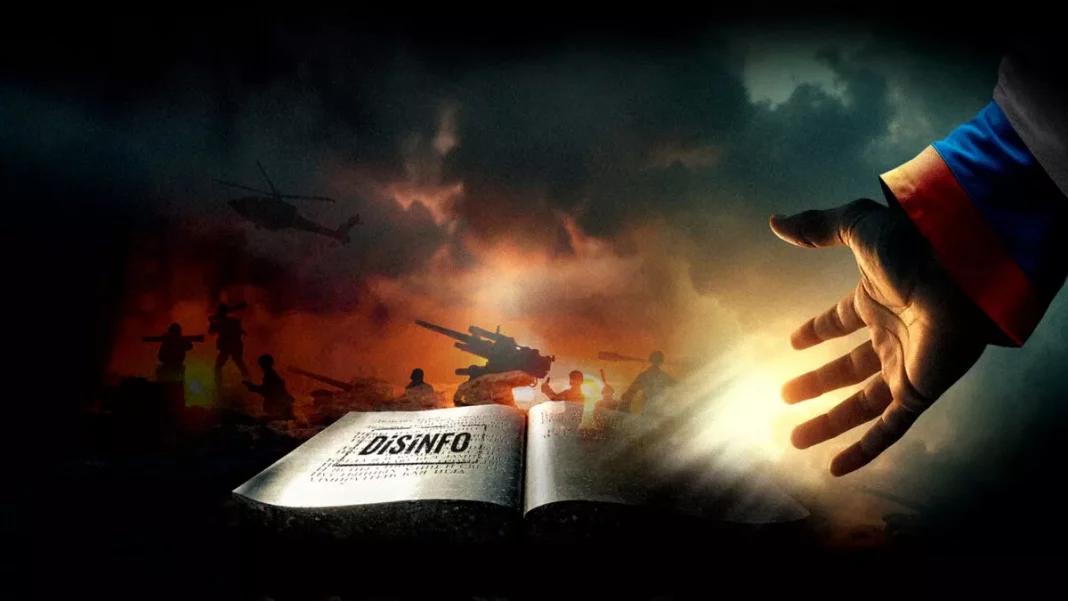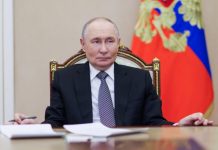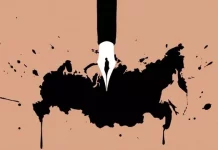By EUvsDisinfo
Since Russia launched its full-scale invasion of Ukraine in February 2022, the Kremlin’s propaganda and disinformation machine has developed a whole category of narratives to spin the war. Russian setbacks on the battlefield are camouflaged as part of plans ‘securing better positions’ or ‘humanitarian gestures’ while diplomatic setbacks are framed as being due to Western ‘Russophobia’ and quickly brushed away.
However, the gears of this propaganda machine periodically fail. At such moments, it becomes evident that Russian propagandists are afraid to take even the tiniest steps without instructions from the Kremlin.
Failing gears
This tends to occur in times of significant shocks that the Kremlin failed to foresee or chose not to acknowledge.
The first time Russian propaganda faced such a shock was in early 2022, when the narrative ‘Take Kyiv in three days’ turned out to be false, and again during the Ukrainian operation to liberate Kherson and hasty withdrawal from dozens of settlements in the Kharkiv region. At that moment, propaganda outlets kept quiet, not knowing how to react to this situation, because the Kremlin still managed to hold pseudo-referendums on the annexation of Ukrainian territories. Once the Kremlin’s manuals appeared, Russian outlets began talking in unison about the regrouping of Russian troops, but not about the loss of temporarily occupied territories.
A similar situation unfolded recently as the Ukrainian armed forces unexpectedly shifted military operations onto Russian territory and advanced into the Kursk region to secure a buffer against Russian attacks being launched from there.
At such moments, the Potemkin world of Kremlin propaganda collapses and its mouthpieces take a wait and see approach, voicing only official statements of the Russian Ministry of Defence. And after a long silence in anticipation of the arrival of the Kremlin’s instructions – Temnik in Russian – the propaganda machine finally launches the flywheel of information manipulation.
May 2023: ‘Innocent children’ in the information vacuum
When the Legion of Freedom of Russia and the Russian Volunteer Corps crossed into Russia in the Belgorod region on the morning of 22 May 2023, the Kremlin propaganda machine floundered. The outlets were silent in anticipation of instructions; only after dinnertime did a first line emerge, according to which ‘President Putin was informed about the situation’, ‘the territory is being laid’ and situation established.
The following day, the Kremlin finally decided on some talking points and propagandists began to describe the operation as an attempt to deal with ‘Ukrainian terrorists’. At the same time, a narrative about bloodthirsty Ukrainians who ‘ruthlessly shoot’ innocent Russian children began to circulate. The topic quickly faded, and an information vacuum formed once again. It was only on 24 May – two days after the advance into Russian territory began – that the Kremlin disinformation machine finally received its talking points and sprang into full action.
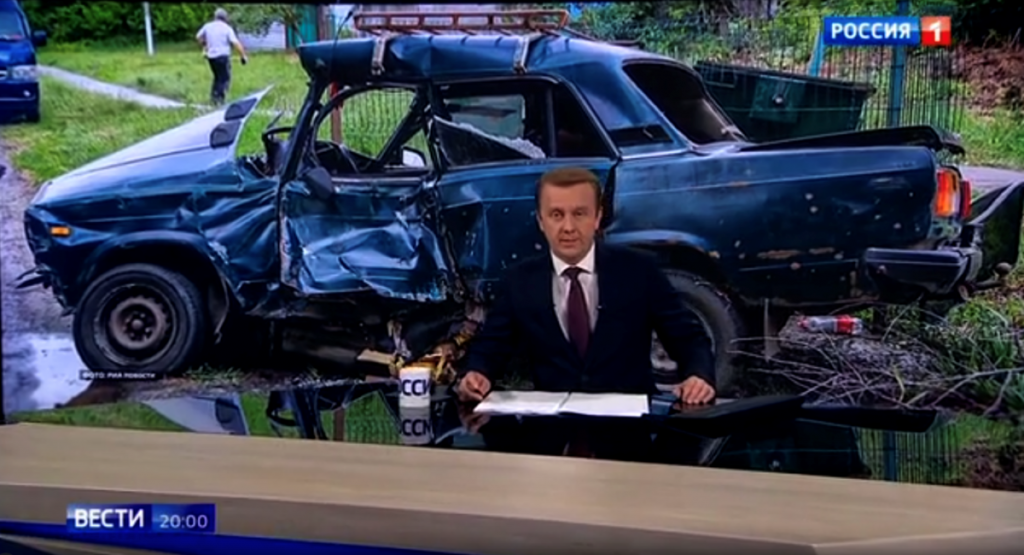
Image from state TV Russia 1
Russian outlets simultaneously began to release material about a ‘failed terrorist sortie or raids of the Armed Forces of Ukraine’ designed to ‘overshadow the deafening success of the Russian army’ in Bakhmut – a city that no longer exists as a liveable place and now resembles the ruins after an apocalypse.
March 2024: Elections, elections, elections
When the second breach of the Russian border unfolded on 12 March 2024, the Kremlin appeared more prepared: it had sent instructions in advance to pro-Kremlin outlets how to respond to similar ‘provocations’. Instructions appeared (1) to not let these events overshadow Putin’s elections under any circumstances and (2) to fuel in every possible way Russian ‘patriotism’ and faith in the mantra that ‘Putin protects everyone’.
“Local heroism”
State outlets immediately began reporting that Russia was ‘suppressing’ the incursion of ‘Ukrainian terrorists’ into the Kursk and Belgorod regions while categorically denying that settlements had been seized. The Kremlin’s experts unanimously declared that a ‘large-scale provocation on the Ukrainian side’ was directly linked to the Russian presidential elections, but that this was a ‘risky and thoughtless game’.
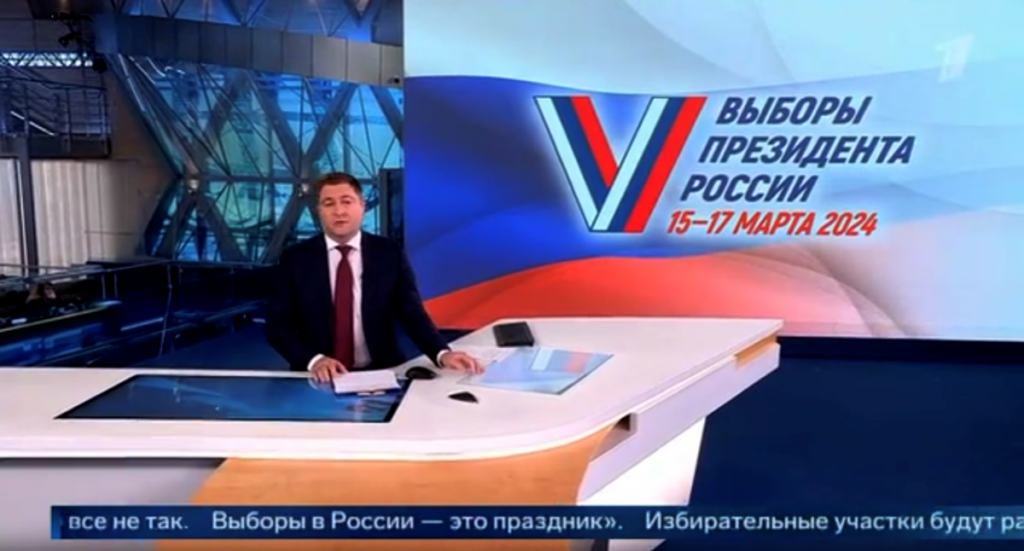
Image from state TV Channel One Russia
‘Russians aren’t afraid’
The fighting in Belgorod region was mentioned in the Russian outlets only to support the main narrative according to which local residents were ‘actively voting’ despite the ‘provocations of the Kyiv regime’. Residents were praised for their ‘courage and fortitude’ in confronting ‘Ukrainian Nazis who are killing civilians’.
‘I’m scared, of course, how can I not be?’, a local resident of Kursk region said on air. ‘But Russians aren’t afraid!’, the presenter insisted. ‘Yes, yes’, the resident replied.
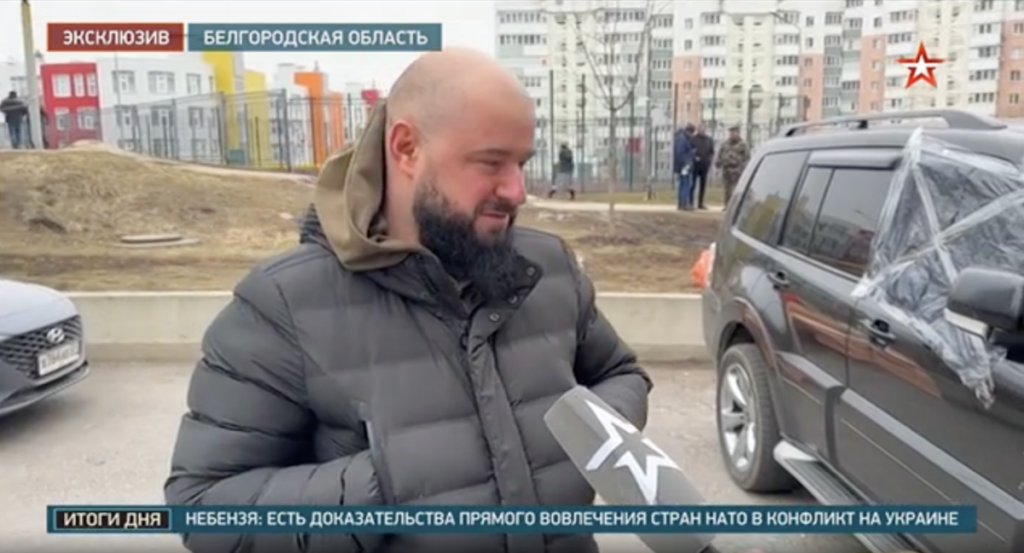
Image from Russian Ministry of Defence TV Zvezda
But Belgorod was soon overshadowed by a terrorist attack at the Crocus City Hall in Moscow on 22 March 2024, which sent pro-Kremlin political commentators into a frenzy of disinformation, conspiracy theories, and manipulative rhetoric. You can read more about this in our article ‘Hinterland on fire’.
August 2024: Chaos in anticipation of Temnik
On 6 August 2024, Ukraine launched an operation in the Kursk region of Russia. During the first days, pro-Kremlin and state outlets behaved in much the same way as during Yevgeny Prigozhin’s march on Moscow in June 2023: they downplayed events and pretended that nothing extraordinary was happening.
In a brief press release, the FSB announced a ‘provocation’ in the Kursk region and measures to ‘repel armed aggression’. A day after the start of the Ukrainian operation, a visibly uneasy or nervous Putin commented on the invasion for the first time, calling the advance of Ukrainian troops ‘this situation’ and a ‘large-scale provocation’.
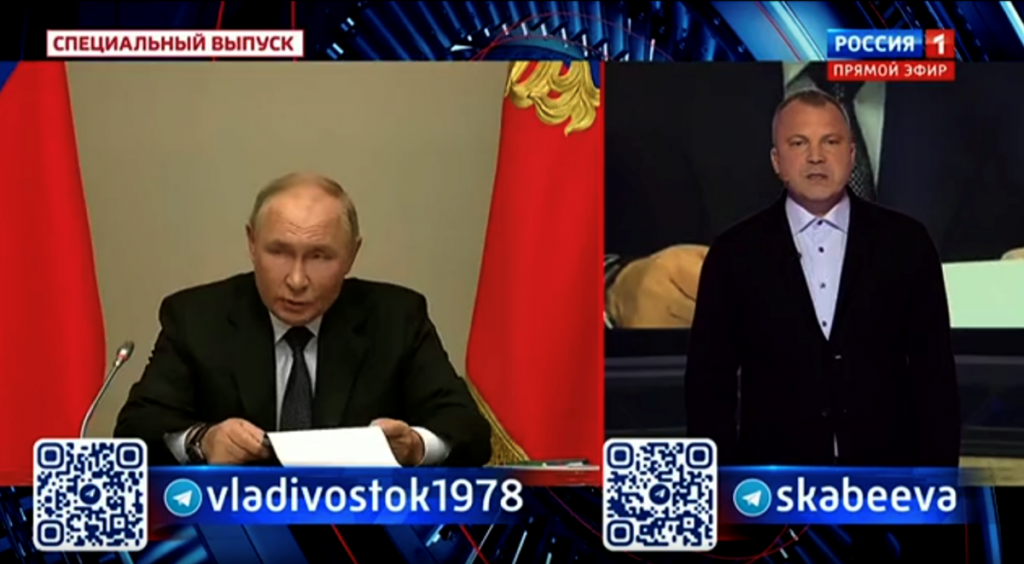
Image from state TV Russia 1
Soon another embarrassing moment occurred for Kremlin disinformation: Ukraine officially recognised that it had begun military operations in enemy territory. Russian propagandists clearly had no talking points for such a case and began to hastily create new turns of phrase to avoid using the word ‘war’, a taboo word for the Kremlin. A ‘counter-terrorist operation’ was introduced in the region and a state of emergency declared.
From Kursk…to the WWII Battle of Kursk
The propaganda flywheel started spinning and pro-Kremlin outlets all at once began publishing reports about the ‘stunning advance of the Russians’. Propagandists began to ‘liberate’ not only the entire Donetsk region of Ukraine, but also the Kharkiv region, even though there was not yet any advance of Russian troops there. ‘The Russian command has solved the simple Ukrainian trap… the exposed sections of the Ukrainian front have given in to the pressure of our fighters and have started to fall like dominoes’, they triumphantly proclaimed. Kursk found itself pushed to the tail end of the broadcast.
In addition, the propagandists were instructed to compare the border breach to the Battle of Kursk in World War II, appealing to the patriotism of Russians and focusing on the ‘atrocities’ of the Ukrainian Armed Forces. And, of course, to talk about the plan designed by NATO / the US and other ‘NATO mercenaries’ who breached the Russian border – after all, the Ukrainians themselves are ‘not in a position’ to plan and fight a superpower like Russia.
After a month of Ukrainian advances in the Kursk region, Kremlin propagandists were finally able to reach a common denominator and developed manuals for describing ‘this thing’. News about the Ukrainian invasion turned into standard ‘military reports’. The Kremlin reports also praised the local heroism and resistance – even if there has been remarkably limited local resistance to the Ukrainian forces taking control of towns and surrender of formations of Russian conscripts.
Russia’s domestic and foreign policies are built around idealisation, myths, and stable narratives. The Kursk advance as well as previous raids on Russian territory, showed that first priority of Russian state structures, TV channels and the armed forces’ is to protect the image of Putin. They also illustrate that when confronted with unexpected events, the Russian state propaganda machine is tripping over its own shoelaces.
By EUvsDisinfo


